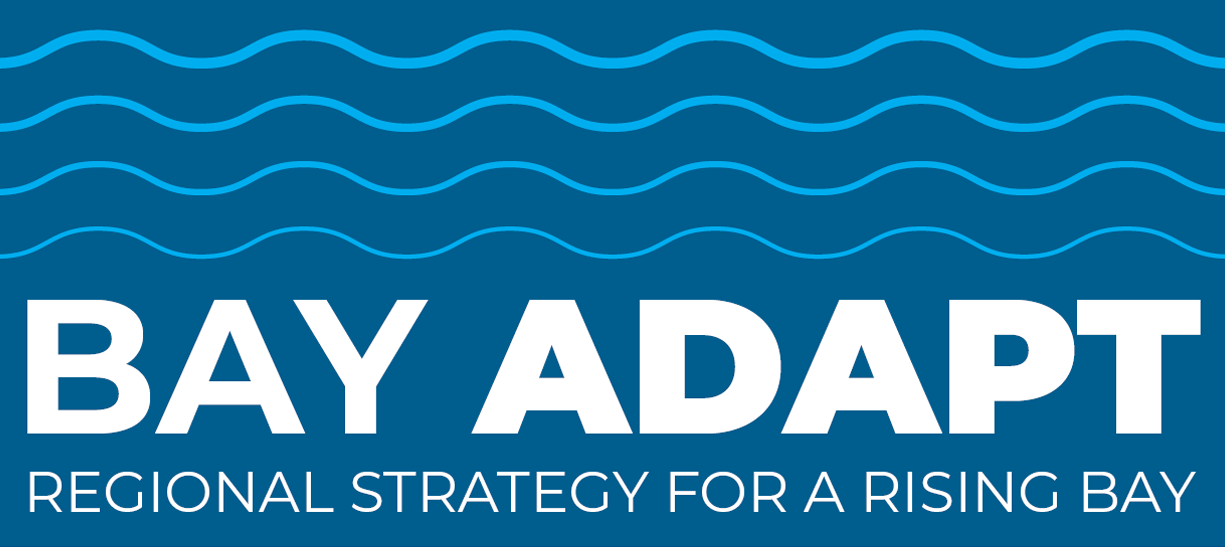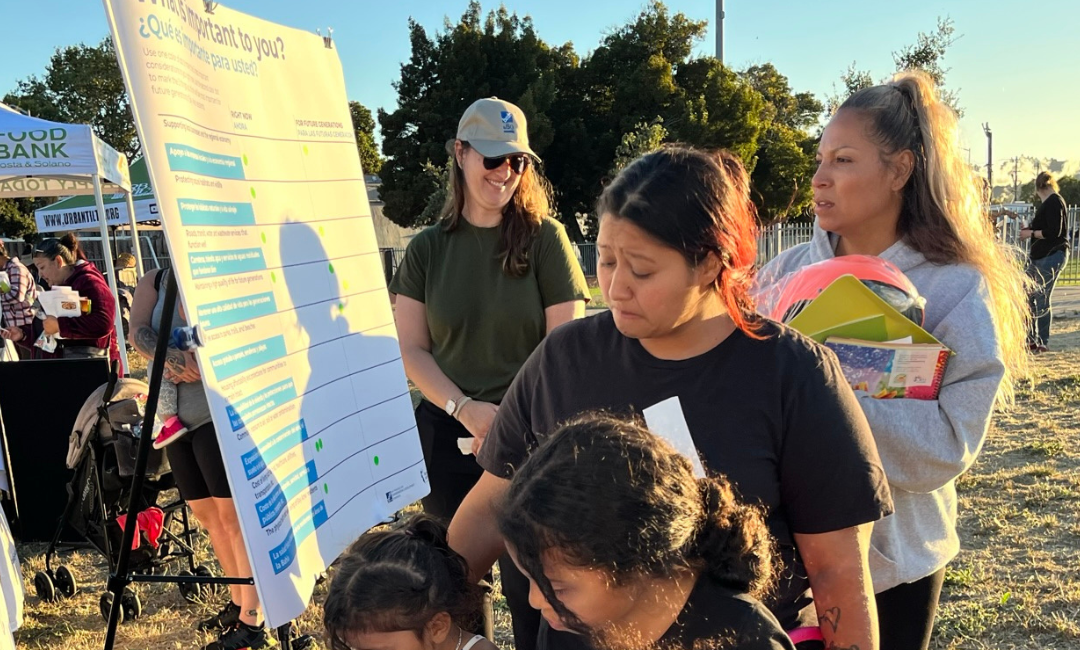Add page content here.
RSAP’s One Bay Vision: A Resilient Future for Bay Area Communities
- By: Justin Ebrahemi
- | March 11, 2024
The Bay Area is a beautiful, diverse place. The region’s communities have many different priorities, including building affordable housing, cleaning up shoreline contamination, restoring tidal wetlands, and more. These local perspectives help define the Bay Area – and they have become a critical part of the vision of BCDC’s Regional Shoreline Adaptation Plan (RSAP). For the past half year, BCDC has worked to capture community members’ voices to help create a regional vision for our shoreline’s future, so that climate adaptation reflects communities’ needs. Now, that collective vision will drive the Bay Area’s sea level rise adaptation efforts for decades to come.
The RSAP is a region-wide plan that will guide the creation of local Bay Area shoreline adaptation plans. But a key question for BCDC has been: how do we adapt to sea level rise in a way that most benefits our communities, both for current and future generations? This is where the RSAP’s One Bay Vision for a Resilient Future Shoreline comes in. As the first action of the Bay Adapt Joint Platform, the One Bay Vision describes what future adaptation should look like.
To ensure the vision is rooted in community voices, the BCDC team attended ten local community events around the region last fall to better understand residents’ top issues of concern. Staff talked with dozens of local residents, many in underserved communities such as San Rafael, East Palo Alto, and Bayview, about why they valued the region’s shoreline.
As part of these conversations, residents considered eight key issues including critical services, housing and development, recreation, and ecosystem health, and ranked issues in order of importance for both today and future generations. “We found that people have slightly different values for protecting our shorelines now versus in the future,” says Jaclyn Mandoske, Senior Climate Adaptation Planner at BCDC and project manager for the RSAP. “For today’s concerns, we saw people highlight issues such as housing affordability and the cost of living.” When they considered the needs of future generations, most people’s top priorities were the health of Bay communities and ecosystems. BCDC also asked other Bay Area residents similar questions via an online survey, which the agency shared widely through various platforms including social media. Ultimately, this community outreach process reached over 500 locals and helped define the One Bay Vision.
By the end of 2024, BCDC will develop sea level rise adaptation guidelines to bring the One Bay Vision to life in local communities. The guidelines will pave the way for jurisdictions to plan land use and adaptation projects that align with the One Bay Vision. The One Bay Vision also takes communities’ diverse priorities and unifies them into a holistic region-wide approach. “We live in a world where all of these things are highly interconnected,” explains Mandoske. “So for example, our vision for healthy communities is tied to transportation, shoreline access, ecosystem health, affordable housing, and more.” By emphasizing these connections, the RSAP will guide jurisdictions to plan projects with diverse benefits, such as transportation projects that also restore wetlands and improve shoreline access for underserved communities. “We want to help people make choices that will result in the most benefits across all these issues,” explains Mandoske.
In addition, deep and equitable collaboration is a key theme throughout the One Bay Vision. “For adaptation to benefit people and the environment, we need a holistic approach for all the agencies and communities to work together,” says Miyko Harris-Parker, a Belle Haven resident in the City of Menlo Park who serves on the RSAP Advisory Board and the RSAP Equity and Outreach & Communications subcommittees. For Harris-Parker, it was crucial to have people’s lived experiences, such as her own, help shape the One Bay Vision. “I’m not an environmental specialist or an engineer, I’m a resident who has lived in an underserved community for over forty years. I want to speak for my neighborhood and for my community,” she explains. “It’s important for our communities to be involved because they have historical knowledge that experts won’t necessarily have.”
For years to come, sea level rise will be part of life for many Bay Area communities. BCDC aims to use this immense challenge as an opportunity for collective, transformative change in the region. This is the ultimate goal of the One Bay Vision, as its opening statement says: “As sea levels rise, the Bay Area’s diverse communities come together to transform how we live, work, plan, and adapt along our changing shorelines… A resilient future for the San Francisco Bay Area starts now and continues for generations to come.”
Read the full working draft of the One Bay Vision here.
Bay Area residents are encouraged to get involved by attending the next RSAP virtual public workshop, where BCDC will present the One Bay Vision. Subscribe to BCDC’s RSAP newsletter for updates on the workshop here: https://lp.constantcontactpages.com/su/lICNWAb
Other Recent Posts

Justin Ebrahemi
Justin Ebrahemi is the Director of Marketing & Communications at Greenbelt Alliance, where his experience in nonprofit leadership, environmental policy research, and journalism helps diversify the field of environmental advocacy.

